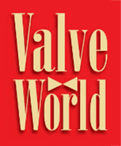
Companies and organizations like the Environmental Protection Agency (EPA) are attempting to reduce the emissions of greenhouse gasses (GHGs) and other harmful pollutants from the Crude Oil and Natural Gas source category. According to Rodney Roth of RFS Compliance Solutions, many advancements are potentially needed to further reduce emissions and the overall future of the oil and gas industry.
By Sarah Do Couto and Sarah Bradley
In November of 2021, the EPA released a document entitled “Standards of Performance for New, Reconstructed, and Modified Sources and Emissions Guidelines for Existing Sources: Oil and Natural Gas Sector Climate Review.” This proposal comprised of three key sections:
• A proposal to revise the new source per-formance standards (NSPS) for GHGs and volatile organic compounds (VOCs) for the Crude Oil and Natural Gas source category.
• A proposal of new emission guidelines under the Clear Air Act (CAA) for states to follow in developing, submitting, and implementing state plans to establish performance standards and limit GHGs from existing sources.
• Related actions stemming from the joint resolution of Congress, adopted on June 30, 2021, under the Congressional Review Act (CRA) disapproving of the EPAs final ruling titled, “Oil and Natural Gas Sector: Emis-sion Standards for New, Reconstructed, and Modified Sources Review.”
What does it all mean?
Following release, a group of several industry experts and leaders gathered to discuss the current proposal and offer comment; Rodney Roth was one of them. “This rule is going to affect 100% of the natural gas industry, from wells, and compressor stations, to pipelines,” he said.
“The new rule that that is being promulgated right now will likely take another year or so before it will get to the point of bringing it forward as an actual rule. Then it will take a couple of years for it to take effect as people start to make changes,” explained Roth. Still, he knows it is vital for those in the industry to understand the proposal, and for experts like himself to assess and provide comment.
For Roth, some parts of the EPA’s proposal were exciting, while others called for further comment. “What was most interesting, for me, is that this is the first time we are seeing an EPA rule where they have actually written in compliance to API,” he said.
“The new proposal mentions API 624 as well as API 622, for packing. My initial reaction, and one of my public comments, was to add compliance to 641, and potentially ISO 15848-1,” explained Roth. ISO 15848-1 is used for type testing, the production, and classification of valves.
“Since the proposed rule is related to pipelines, the committee had chosen not to consider specifics related to pipeline valves. One of my comments, was therefore, to add a section that would bring in the API 6D standard.” He contin-ued: “While API has standards in the downstream sector, they do not currently have specific testing protocols written into the midstream, or upstream sector. And so now that 6D includes 624, and 641, and ISO, it also mentions ISO 15 848-2, which is a production test that is in place.”
“Most of what we monitor are valves,” he said. “Valves would naturally be where most of the leaks come from, because that is where we moni-tor 10 times more than anything else.” That is not to say, however, that valve emission moni-toring will go away. “We will always need to monitor valve emissions,” Roth clarified. He, and other experts like him, just hope to be able to monitor them even more in the future. If there is a way to reduce fugitive emissions in Oil and Gas systems, Roth, and others like him are bound to do whatever possible to ensure a healthy, sustained, and successful future, for their businesses and the world as a whole.
Roth also encourages the EPA and other companies to consider flanges when testing for fugitive emissions. “We have never had flanges as a part of the quarterly monitor-ing programs because until the addition of the leak testing requirements to ASME B16.20, there had not been any ‘Testing Pursuant to Good Engineering Practices’ to use to gather data to base requirements off of,” he explained. This lack of monitoring is troubling to Roth, as every system is bound to include more flanges than valves, which can also result in considerable and unknown emission leakage.

From proposal to practice
For Roth, the most exciting aspect of the EPA’s proposal was the emphasis on volumetric data. If companies were responsible for closer monitoring and tracking of their emissions numbers, the industry itself could see the bigger picture when it comes to the amount and overall impact fugitive emis-sions have on the environment.
“There was a wide range of perspectives at the December meeting,” Roth said, “From the biggest companies to smaller companies, and all the different arenas including: relative sealing, packing, gaskets, and live loads.”
To his delight, a large portion of the discussion at the meeting was focused on new technology and innovation. After all, Roth himself is a firm believer that if industry professionals are encouraged to look for advancements, then there will continue to be emerging technological improvements in the Oil and Gas space. To explain this, Roth spoke of a recent valve packing situation. “The industry was required to get 500 parts per million packing before the EPA started writing their definitions, which it did. Soon after however, the EPA’s definition changed and became 100 parts, which forced the industry to adapt its technology,” explained Roth. “To meet these altered standards manufactures adjusted and developed products capable of meeting the 100 ppm definition. It will always be the sealing industry’s aim to continue the development of the necessary products to meet forward demand.”
That is why the meetings to better understand the EPA, and the direction they are moving, are so vital. “The EPA, when writing their regulations and creating their compliance documents, base it on information exchange and information transfer,” said Roth. “They not only want but need comments from industry experts to ensure that the documents released have industry support. It provides the committee with the ability to say, okay, where do we go from here?’”
Moving forward
Roth said there is still a significant amount of work to be done regarding API, specifically when it comes to high temperature leaks.
“The API 622, 624, and API641 task groups are all working to understand the need and potential development of additional high temperature testing segments to the standards. This will allow end user organizations to make informed technical decisions regarding their valve and valve packing needs regarding Low E sealing. The strength of having 50 industry experts in one room to talk about emission issues, rather than two or three individuals at a plant, will be very beneficial to the progress of the industry,” he concluded.
What is API?
API, or “American Petroleum Institute,” is an organization which provides a commonly used index of the density of crude or refined products. This index is utilized worldwide to provide standards for the Oil and Gas industry.
There are numerous types of API standards, many of which intend to monitor fugitive emissions, including:
• API Standard 622: Type Testing of Process Valve Packing for Fugitive Emissions
• API Standard 624: Type Testing of Rising Stem Valves Equipped with Graphite Packing (Qualification testing for valves compliant to API 600, 602, 603 and API 623)
• API Standard 641: Type Testing of Quarter-turn Valves for Fugitive Emissions (Qualification testing for valves compliant to API 599, API 608, and API 609)
About the expert
 Rodney has over 25 years of experience in the manufacturing, design, R&D, engineering, sales and marketing of stationary sealing solutions to include packing and gaskets. Rodney has
Rodney has over 25 years of experience in the manufacturing, design, R&D, engineering, sales and marketing of stationary sealing solutions to include packing and gaskets. Rodney has
extensive experience in the recommendation and design of engineered sealing solutions for use in all types of valve and flange applications with a focus on Low E sealing Technology for valves and large diameter critical flange sealing.


